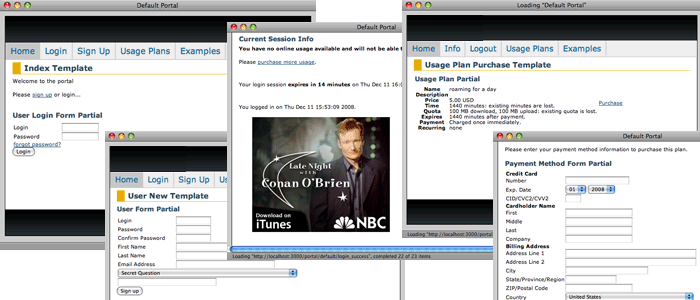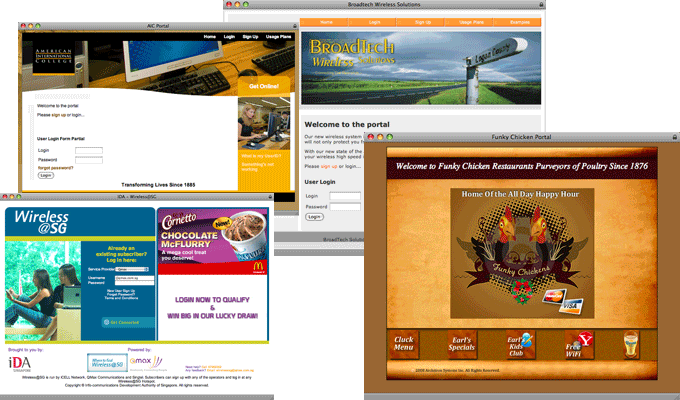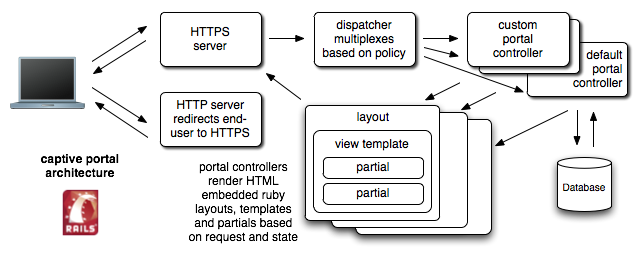Portal Customization
The predominant forced browser redirection deployment methodology is to use the rXg captive portal as the destination for web requests originating from unauthenticated devices. End-users then navigate and utilize the functionality present in the captive portal web application to obtain transit to the WAN. Thus the rXg captive portal represents the vast majority of the end-user experience and customization of the captive portal is an integral facet of the operator marketing strategy.

The default captive portal web application contains a plethora of functionality that is fully integrated into the packet management capabilities of the rXg. The operator may choose to instantly deploy a fully operational revenue generating network by using the default captive portal as is. Alternatively, the operator may choose to customize the captive portal in a number of ways ranging from changing the artwork and layout to implementing entirely new functionality through the underlying the Ruby on Rails infrastructure.

Modifying the artwork and layout of the default captive portal is easily accomplished. The rXg uses industry standard CSS and HTML to control the presentation of the captive portal. Anybody who is skilled in the art of web publishing is capable of dramatically changing the default look and feel into any of the examples depicted.

Ruby on Rails is the web application infrastructure used to implement the rXg captive portal. When customizing the captive portal, the operator has complete access to the underlying Ruby on Rails infrastructure. Using rails, the operator can modify the default captive portal functionality in nearly any way imaginable.
The rails framework also enables the operator to rapidly create entirely new functionality that is not present on the default rXg. Most operators create new functionality in the portal to benefit the end-user experience in some way. One popular customization is integration of the token and/or coupon generation functionality with an external trigger. For example, this allows an operator to have real-time token or coupon generation linked to a point-of-sale system.
New functionality is not limited to end-user facing capabilities. Full access to the rXg persistent store through the rails-based database abstraction layer enables the operator to implement entirely new administrative capabilities through the portal customization infrastructure. For example, many operators use the captive portal infrastructure to create reporting engines. Some have even integrated their accounting system with the rXg using a custom portal view. Rails can even be used to open network sockets for real-time event-driven integration with external systems.